History and equity justify 19th seat
(CNS): The introduction of a new legislative seat in the district of George Town allowed the Electoral Boundary Commission (EBC) to create exceptionally even numbers in the new constituencies within the existing historical boundaries of Grand Cayman’s three largest districts. Justifying creating 19 rather than 18 single member constituencies, the commission chair said the draft map fulfilled its constitutional remit by sticking to historical boundaries and creating the most equitable potential voter populations in 15 out of the 19 seats.
The commission said that with the extra seat in the capital they were able to create new constituencies within the main districts of Bodden Town, George Town and West Bay that averaged around 1,340 qualified electors, with a variance of just 64 potential voters between the smallest and largest seats.
Commission chair Dr Lisa Handley explained to a small crowd in the capital’s town hall on Tuesday night at the penultimate public meeting on the subject why the EBC settled on the additional seat, the reason for maintaining the two smaller eastern districts and why they veered away, in some cases, from the polling station areas which had formed the potential constituency boundaries by past commissions.
The international election consultant spoke about the constitutional requirements for commissioners to follow and the importance in the first instance of historical integrity, followed by the balance of potential — not just registered — voters.
The division of Cayman Brac and Little Cayman, which has a constitutional carve out for two seats, has created two constituencies of qualified electors with 594 in Cayman Brac East and 610 in Cayman Brac West and Little Cayman, which, despite being half the size of the majority of Grand Cayman seats, created an equity between the Sister Islands’ constituencies.
For North Side and East End, Handley explained that, in addition to the first constitutional requirement of respecting historical boundaries, the two districts are distinct and separate communities. Heavily attended public meetings in those districts and direct submissions had also made it clear voters wished to remain as separate constituencies.
The numbers of qualified voters across both districts also played a part and the commissioners found that a single eastern district constituency would be much larger than any other seat in terms of qualified voter numbers, with over 1,500 qualified voters. The geographical size of the constituency was also considered and merging North Side and East End would create an exceptionally large seat.
As a result, Handley said, the commissioners felt there was sufficient reasons for making an exception and that having two under-populated seats against a very even balance in the majority was less of a problem than one significantly overpopulated seat.
With more than 20% of the people who are qualified to vote still not registered, dividing up the larger three districts where most of the voting population lives was more complicated but the commissioners were able to create 15 very even seats within the historical boundaries. The smallest constituency is George Town North, with 1,300 potential voters, and the largest is Bodden Town East, with 1,364, creating equity for both voters and MLAs in the bulk of the country.
The commissioners confirmed that they have not drawn an alternative map with 18 seats, but Handley stated that if Cabinet rejected their recommendations, the commission could be reformed to redraw the George Town area constituencies and increase those seats. However, there would be a headcount of more than 1,500, creating an imbalance in the capital, which is bound to continue growing, compared to the numbers in the eight seats in the neighbouring districts, she said.
Despite the recent populist outcry over the additional MLA, which will add around $130,000 a year to the parliamentary budget for the salary, benefits and constituency costs, for another politician, only around a dozen members of the public attended the meeting.
While members of the audience queried where the money for an extra seat is coming from, comments and concerns indicated that some voters are still confused over voting systems in general, the constitutional provisions, the selection of ministers and the remit of the commission.
Kenneth Bryan, a PPM candidate in the previous election, also raised the question of another referendum, as he said the 2012 poll did not settle the issue of support for single member constituencies.
A leading member of the OMOV referendum campaign, Bryan said he believed that voters and the broader public all supported equity in the voting system but he was not convinced that they all supported the concept of single member constituencies. Despite the ticking clock on election reform in time for the 2017 election, government should hold another public vote, he said, this time with the question of introducing SMCs asked separately.
Bryan said that once the country answers that question, if the majority support SMCs then the debate is finally over. But if not, then that would open the doors for a nationwide debate on what system, instead of SMCs, that has equity in voting and equity in candidates could suit the Cayman Islands. Bryan said it should not be up to politicians or potential candidates like himself to decide alone, as they all have a vested interest. The decision, he said, needs to come directly from the voting populace.
Bryan said that during the previous OMOV campaign politicians on both sides of the argument campaigned heavily and in some respects distorted the outcome, which was more about the UDP versus the PPM, the inequity of the eastern districts and the position of the premier at the time, McKeeva Bush, than it was about the subject of electoral reform.
Since then, he said, the public has had time to contemplate the details of election change itself and a new referendum would be focus on the reform and introduction of a new system rather than party or personality politics.
The final boundary commission public meeting takes place this evening (Wednesday 8 July) at 5:30pm at the Savannah United Church Hall and the public consultation closes at midnight.
Proposed constituencies:
| Constituency Name | Caymanian Population over 15 years |
| 1. Bodden Town East | 1,364 |
| 2. Bodden Town west | 1,341 |
| 3. Cayman Brac East | 594 |
| 4. Cayman Brac West | 610 |
| 5. East End | 743 |
| 6. George Town Central | 1,354 |
| 7. George Town East | 1,304 |
| 8. George Town North | 1,300 |
| 9. George Town South | 1,328 |
| 10. George Town West | 1,331 |
| 11. Newlands | 1,344 |
| 12. North Side | 802 |
| 13. Prospect | 1,343 |
| 14. Red Bay | 1,336 |
| 15. Savannah | 1,319 |
| 16. West Bay Central | 1,330 |
| 17. West Bay North | 1,319 |
| 18. West Bay South | 1,325 |
| 19. West Bay West | 1,314 |















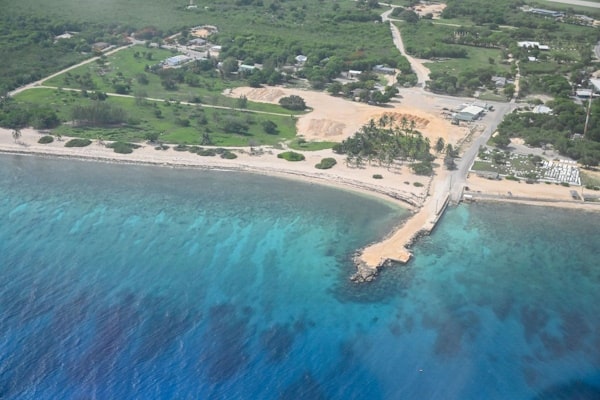




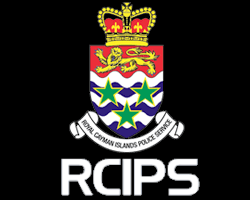

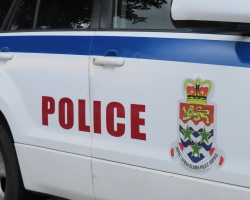





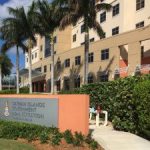
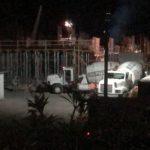
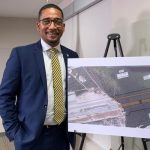

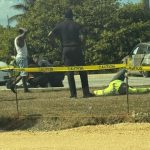

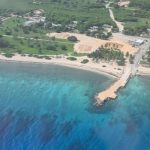


The PPM are afraid of Ezzard and Arden thus their caving in on the unfair redistricting. The baloney about unique communities has been part of Cayman’s refusal to move forward as a united country.
Cayman needs a two-term limit on its elected members.
Anyway, here we go folks, make way for another over-paid do-nothing career-politician yes-man. We are the third most expensive country in the world to live in, for no good reason.
Bollocks! Pure political pandering.
So next election they will redo the boundaries again? People move all the time, and with new developments coming into existence all the time, the population will increase in diffeent areas at different rates. Hello?
The average number of electoral constituants per UK member of parliament is just north of 66,000. Per US congressman it is 77,000. Australia 86,000. Canada 85,000.
We should have a MAXIMUM of 9 representatives of approximately 2500 people each. That is still ridiculously overstaffed but will create the ability to get clear majority votes and will also cut the cost of MLA’s in half.
PPM will surely move forward with this as it guarantees them the next election. Bobo’s Arden and Ezzard are kept in check since they didn’t merge their districts, they get one more seat in GT where they are strong, and Moses keeps his seat. And since they are currently in power, they can manipulate the district boundaries each election to their liking, the same way US Republicans Gerry mander their districts to get elected each term. This is such a bad move for Cayman.
Cayman is over governed.
Cut the number of elected members to 7 (9 if you are feeling generous).
The elected members should set strategy and let the chief officers work out the tactical stuff.
Nothing but shameless, unadulterated, politricks going on here folks.
We look like hicks when we do this sort of thing.
Party politics continues to drive Cayman downward.
Anyone can justify an increase with an excuse. I can find many more real reasons to reduce the number by at least 12! Mostly due to incompetence, racism, corruption and more incompetence and corruption. There, treason, in your face.
Paying for the additional seat is EASY. Simply reduce the salary of all elected members by $10K and use the funds to pay for the additional member and have a bit left over. This should be justified as all elected members will have less persons to represent. Except for EE & NS which are overpaid as is.
I would merge the sister islands into one seat representing 1,200 voters and merge NS and EE for a total of 1550 voters and we end up with 17 seats each representing between 1300 to 1550 voters ans also save 130k in the process.
Why is an MLA representing a district of 1300 people have the same parliamentary vote weight as one representing 600? Why do they earn the same?
If we keep these boundaries, should Ezzard’s vote in the LA have less weight than Archer’s? Should he earn proportionately less?
Nothing justifies 19 seats – not at the pay level the greedy MLA’s demand. Nothing justifies two seats for the Brac or separate seats for North Side and East End.
Equine manure.
So statistically we can just ignore the outliers come election time.
Unfortuanttly that is not how it works. The lesser Caymans hhas two people representing them and I have one.
Cayman needs to spend a few years (after the next election but before the next Boundary Commission in 8 years) debating our preferred number of representatives and the relative importance of ‘traditional boundaries’ vs ‘equality of numbers’. That way the next Boundary Commission will receive instructions we agree on for a known outcome (either more seats or majorly redrawn boundaries). Such a decision may even take a constitutional change (referendum) so the consideration needs to start shortly after the election and go for either 2 or 6 years. (In order to de-politicize the process.)